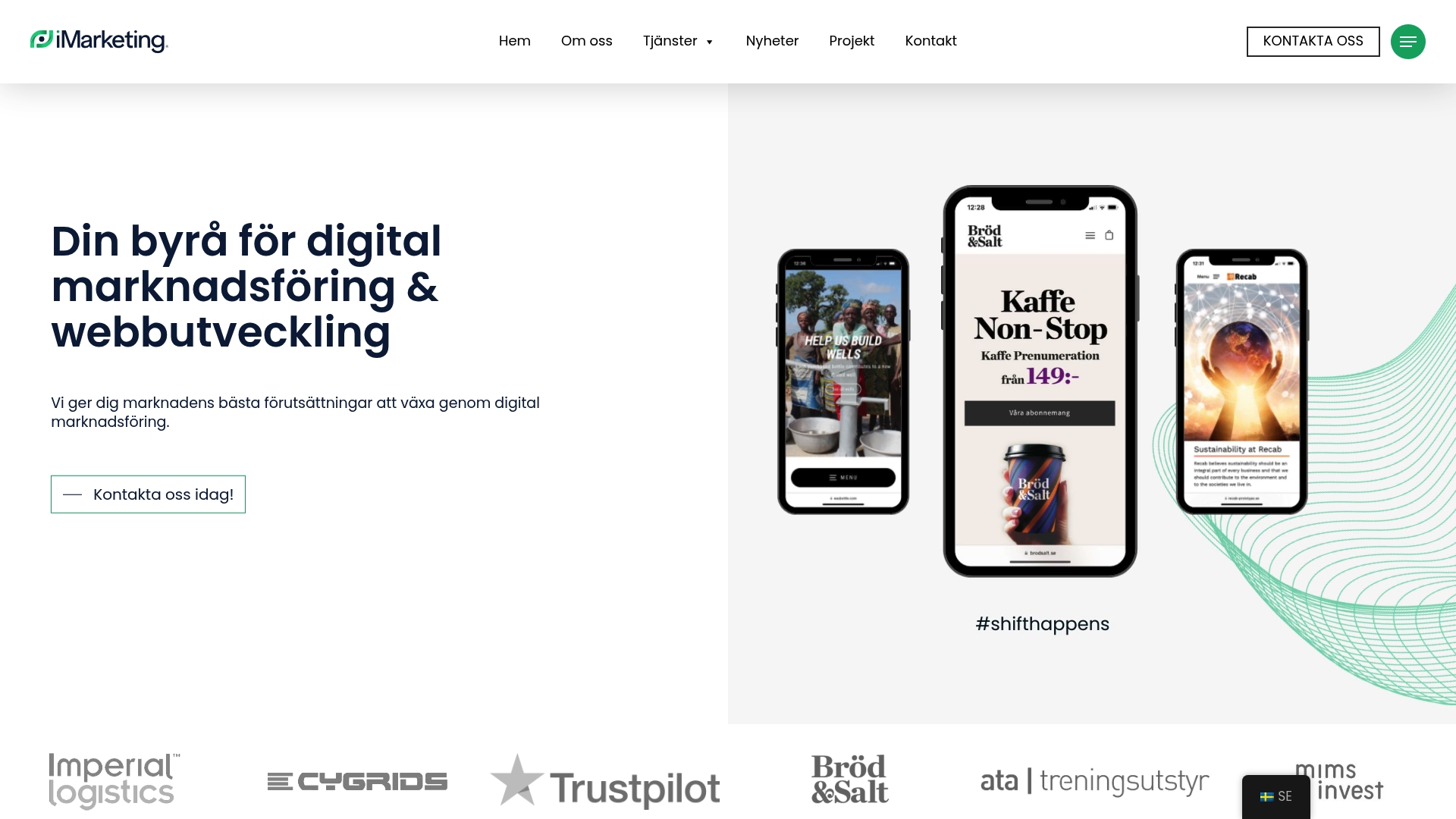Did you know that businesses that set clear goals for their Google Ads campaigns can see an improvement of up to 70 percent ROI? Understanding what you actually want to achieve makes all the difference between wasted advertising dollars and tangible business results. Here you will get practical tips that will help you steer towards clearly measurable success and give you better control over your marketing efforts.
Table of contents
- Step 1: Set clear goals and measurement points
- Step 2: Optimize ad copy and keywords
- Step 3: Adjust bidding and budget smartly
- Step 4: Use audience targeting for better accuracy
- Step 5: Analyze, test and continuously improve
Quick summary
| Key points | Explanation |
|---|---|
| 1. Set specific goals | Define clear and measurable goals that support your business strategy to effectively measure progress. |
| 2. Optimize ad copy and keywords | Use relevant and attractive ad texts with carefully selected keywords to increase click-through rate and conversion. |
| 3. Manage budget and bid strategy | Choose an effective bidding strategy and adjust your budget to maximize your return and minimize resource waste. |
| 4. Targeting is crucial | Define your ideal customer and use targeting options to reach the right audience with your ads. |
| 5. Analyze and improve continuously | Conduct regular analytics and A/B testing to constantly optimize your campaigns and achieve better results. |
Step 1: Set clear goals and measurement points
Defining clear and measurable goals is critical to success with Google Ads. Without well-defined goals, you can’t effectively measure or optimize your advertising results. It’s about creating smart goals that are specific, measurable, and relevant to your business’s overall strategy.
Start by identifying the most important key metrics for your business. This could include:
Here is a summary of important measurement points and their significance:
| Measuring point | Description | Why important |
|---|---|---|
| New customer inquiries | Number of incoming leads | Measuring influx of interest |
| Conversion rate | Percentage of leads that convert | Shows efficiency in the process |
| Cost per acquired customer | Spend per new customer | Helps control ROI |
| Revenue from ads | Revenue generated from ads | Direct link to profitability |
- Number of new customer inquiries
- Conversion rate
- Cost per acquired customer
- Revenue generated from ads
When choosing goals, it’s important to be specific and realistic. Instead of a general goal like “increase sales,” you should formulate a specific goal like “increase online sales by 25% in the next three months through Google Ads.”.
Used digital marketing guide to ensure that your goals are well-rooted in your overall marketing strategy. This will help you create a coherent approach that supports your business goals.
A crucial tip is to regularly monitor and adjust your goals. The digital marketing landscape is changing rapidly, and your goals need to be flexible and adaptable. Conduct monthly evaluations of your results and be prepared to make necessary adjustments.
The next step is to choose the right measurement tools and ensure that you can track these goals effectively through Google Ads analytics features.
Step 2: Optimize ad copy and keywords
Ad copy and keyword optimization is crucial to improving your Google Ads results and increasing your ad visibility and conversion rate. Through strategic wording and careful keyword analysis, you can greatly improve your ad effectiveness.
Start by conducting thorough keyword analysis. Identify keywords that are:
- Relevant to your business
- Has sufficient search volume
- Not for the competitive
- Have purchase intention
When developing ad copy, focus on creating content that is:
- Clear and concise
- Solves the customer's specific problems
- Contains a strong value proposition
- Includes a clear call to action
An effective trick is to use dynamic keywords that automatically adapt the ad text to the user's search query. This significantly increases relevance and click-through rate.

With Google Ads guide you can deepen your understanding of how to strategically select and implement keywords that deliver results.
It’s also important to continually test and adjust your ad copy. Create at least two versions of each ad and compare their performance. This is called A/B testing and will help you understand which wording works best for your target audience.
The next step is to set up effective budgets and choose the right advertising strategy that maximizes your return.
Step 3: Adjust bidding and budget smartly
Managing your Google Ads budget and bidding strategy smartly is crucial to maximizing the return on your digital marketing investment. A well-thought-out strategy can help you achieve better results without wasting resources.
Start by understanding different bidding strategies. Google Ads offers several options:
- Manual CPC bidding
- Automated bidding with targeted results
- Strategies focused on conversions
- Bidding based on targeted returns
Research shows that effective budget management is critical to optimizing your advertising campaigns. Continuously analyze your web domain authority and adjust your bidding strategy accordingly.
A smart approach is to start with lower budgets and gradually increase them as you see positive results. This reduces the risk of unnecessary spending and gives you the opportunity to test and learn.
Guide to ROI maximization can help you understand how to optimize your digital marketing budgets for the best possible results.
It’s also important to leverage Google’s automated bidding algorithms, which use machine learning to optimize your ads. These systems can help you achieve better results by analyzing multiple data points that no manual strategy could handle.
The next step focuses on continuously monitoring and adjusting your campaigns to ensure ongoing improvement and maximum results.
Step 4: Use audience targeting for better accuracy
Audience targeting is key to creating effective Google Ads campaigns that reach the right people at the right time. Through strategic segmentation, you can significantly increase the relevance and conversion rate of your ads.
Start by defining your ideal customer profile by analyzing:
- Demographic characteristics
- Geographic location
- Online behavior patterns
- Interests and preferences
- Income level
- Previous purchasing behavior
Google Ads offers several targeting options to help you specify your audience:
- Demographic targeting
- Interest orientation
- Remarketing to past visitors
- Customer matching
- Lookalike audience segments
Step by step social media strategy can provide further insights into how you understand and reach your specific target audience.
A powerful trick is to create separate ads for different audience segments. This allows for more personalized and targeted communication that resonates directly with specific customer segments.
Be prepared to continuously test and adjust your targeting parameters. Digital behavior patterns change rapidly and your strategy must be dynamic and adaptable.
The next step is to analyze and optimize your campaign results to ensure maximum return on your marketing investment.
Step 5: Analyze, test and continuously improve
Success with Google Ads is a continuous process of analysis, experimentation, and optimization. By systematically evaluating your campaigns, you can continually improve your results and increase the return on your marketing investment.
Key metrics you should focus on include:
- Click-through rate (CTR)
- Conversion rate
- Cost per conversion
- Average ad position
- Quality score
Conduct regular A/B tests for different elements in your ads:
- Heading
- Description text
- Call to action
- Landing pages
- Target audience segment
Guide to conversion optimization can give you deeper insights into how to systematically improve your digital marketing campaigns.
A crucial tip is to create a structured process for continuous improvement. Set aside time each week to analyze results and identify improvement opportunities. Don’t be afraid to experiment and adjust strategies based on your data-driven insights.
Don’t forget to look beyond the numbers. Analyze customer behavior and feedback to understand the underlying reasons for your results. This will give you more valuable insights than pure numbers.
The next step is about implementing the lessons and insights you have gained through your continuous analysis and testing process.
Maximize your Google Ads results with iMarketing.se
Navigating the Google Ads landscape can feel overwhelming as you try to set goals, optimize ad copy, and manage budgets while also reaching the right audience and continuously improving your campaigns. The challenge is clear: without a well-thought-out strategy and expert support, you risk missing out on valuable leads and wasting resources. With concepts like conversion rate, smart bidding, and audience targeting in focus, it’s easy to feel unsure about how to get the most out of your investment.
We understand the frustration and the importance of acting quickly to increase your digital presence and profitability. On iMarketing.se We offer tailored services that cover your entire digital marketing journey from web development to advanced Google Ads strategies. We help you set clear goals, optimize your ads, and budget smartly to drive tangible results that are noticeable in your business.

Do you want to take control of your Google Ads and really see the difference in your business? Visit us at iMarketing.se and let's develop a digital strategy together that turns the challenges in the article into your greatest successes. Take the first step today and contact us for a free consultation and discover how we can create growth for your business through effective digital marketing and professional web development. Read more about our solutions in Google Ads and digital marketing to prepare your journey to better results.
Frequently Asked Questions
How do I set clear goals for my Google Ads campaigns?
To set clear goals for your Google Ads campaigns, define specific and measurable objectives linked to your business strategy. For example, formulate a goal like “increase online sales by 25% in the next three months.”.
What metrics should I focus on to improve my Google Ads results?
Focus on key metrics like conversion rate, cost per customer acquired, and ad revenue. By monitoring these metrics, you can identify what's working and where adjustments are needed.
How do I optimize my ad texts for better conversion?
To optimize your ad copy, focus on creating clear and concise content that addresses customer needs and includes a strong call to action. Test at least two versions of each ad and analyze which one performs best.
What does audience targeting mean and how do I use it?
Audience targeting means defining your ideal customer through demographics, behavioral patterns, and interests. Use these insights to create separate ads for different segments, which increases relevance and can improve conversion rates.
How do I test and analyze my campaigns effectively?
Conduct regular A/B tests on your ads to optimize elements like headlines and descriptions. Set aside time each week to analyze your results and identify opportunities for improvement, which can lead to increased return on your investment.
Which bidding strategy is best for my Google Ads campaigns?
There are several bidding strategies to choose from, such as manual CPC or automated bidding. Start with a low budget and adjust it based on results; this will help you identify the strategy that gives you the best return.


